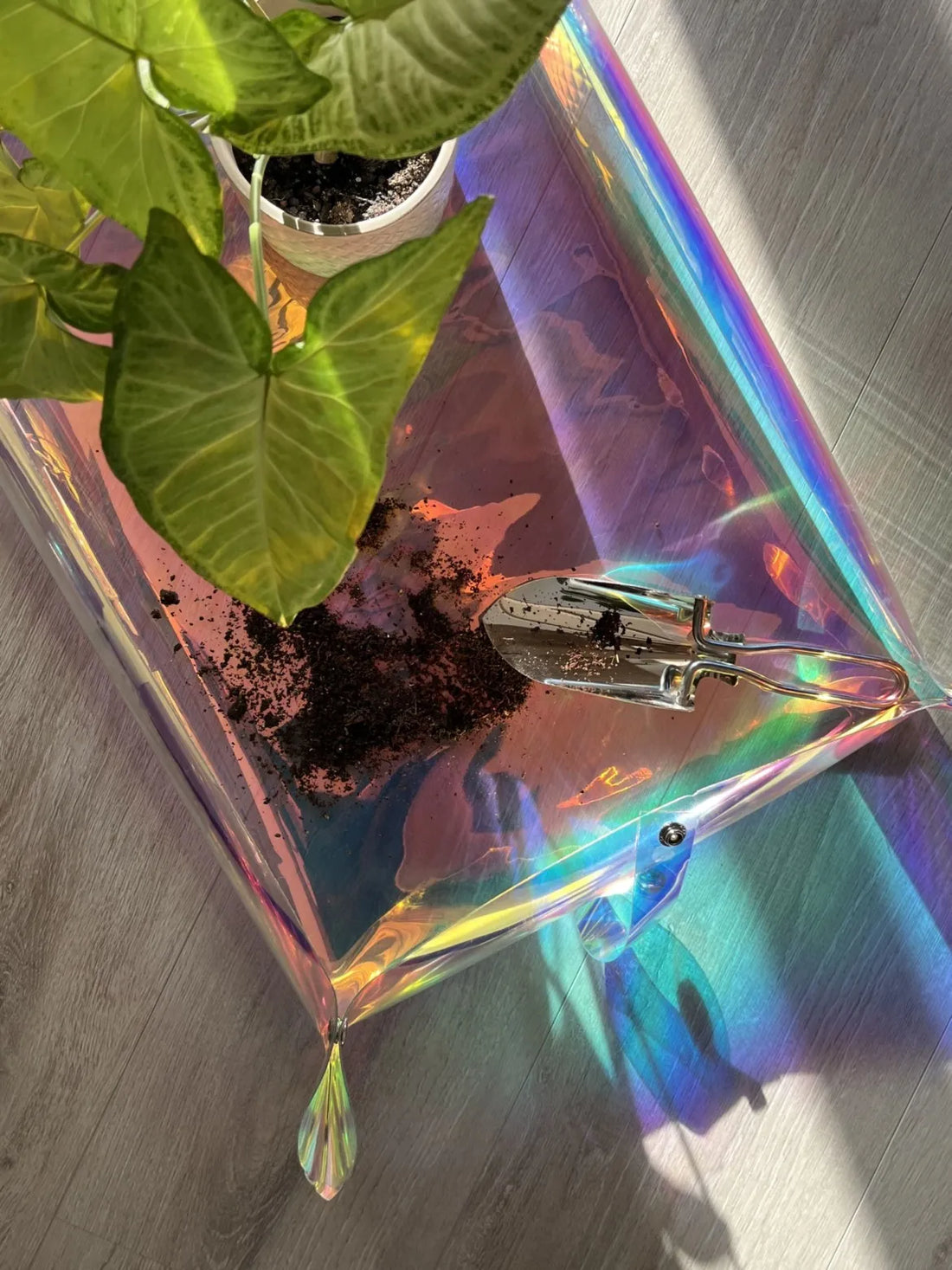Spring is almost here and so is the growth season of plants. This is the best time to repot your indoor plants that need more space to be happier. Here, you find tips how to do it. All you need is
- your plants
- empty pots
- soil
- stones or pebbles for drainage
- scoop or a shovel
- potting mat
- a watering can or a spray bottle
- Optionally, gardening gloves, unless you don’t mind your fingers dirty!
Let’s get ready to repot!
Summary
-
Determine which plants have to be repotted
-
Pick the right pot sizes and potting mix for the plants
-
Prepare the new pots by covering the drainage holes and layering the new potting mix
-
Remove the plants from the old pots and clean the roots from the old soil
-
Place the plants in the new pot sand top with more soil until the roots are covered
-
Water the plants
Why to repot?
If the pot is too small it affects the wellbeing of the plant, its condition might start to look poorer or it can stop the plant from growing completely. If the plant becomes root-bound, meaning there is not enough space for the roots to grow freely, the plant loses its ability to absorb water and nutrients.
Also, if the soil is too old it can get too compact and does not absorb water well. It has most likely lost its nutritional value, too. Adding new, fresh soil helps with watering the plant and supplies the plant with proper nutrients.
How to know which plants have to be repotted?
Typically plants need to be repotted every 12 to 18 months, depending on how much they have grown. With large plants the interval can be longer.
You can tell if the current pot has gotten too small by looking at the bottom of the pot. Are the roots growing through the drainage hole? When you lift the plant out of the pot, can you see Roots wrapped tightly in the pot? If the answer is yes, it is likely that the plant is running out of space in the old pot. Also, as said earlier, the soil can get compact over time. If you notice that when you’re watering the plant, water stays floating on top of the soil for a long time, it might be time to change the soil.
How to repot your plant?
Once you have determined which plants need repotting, start by picking the right sizes for the plants, 1-2 cm larger in diameter for smaller plants, 3-4 cm for larger. Also, choose the suitable potting mix for your plants.
Prepare the pots by making sure they’re clean, and then cover the drainage holes with a piece of paper to make sure the soil stays in the pot. If your pot doesn’t have drainage holes, create a drainage layer on the bottom of the pot with stones, pebbles or similar. Last, add a layer of the potting soil.
When the new pot is ready, remove the plant from the old pot and carefully loosen the roots with your fingers and remove some of the old soil from them.
Tip! For easier removal of the old soil, water the plant the day before repotting. Wet soil comes off easier.
Then, place the plant in its new home and top the pot with more soil, so that the roots are fully covered. Finish with watering the plant, and you’re done!

